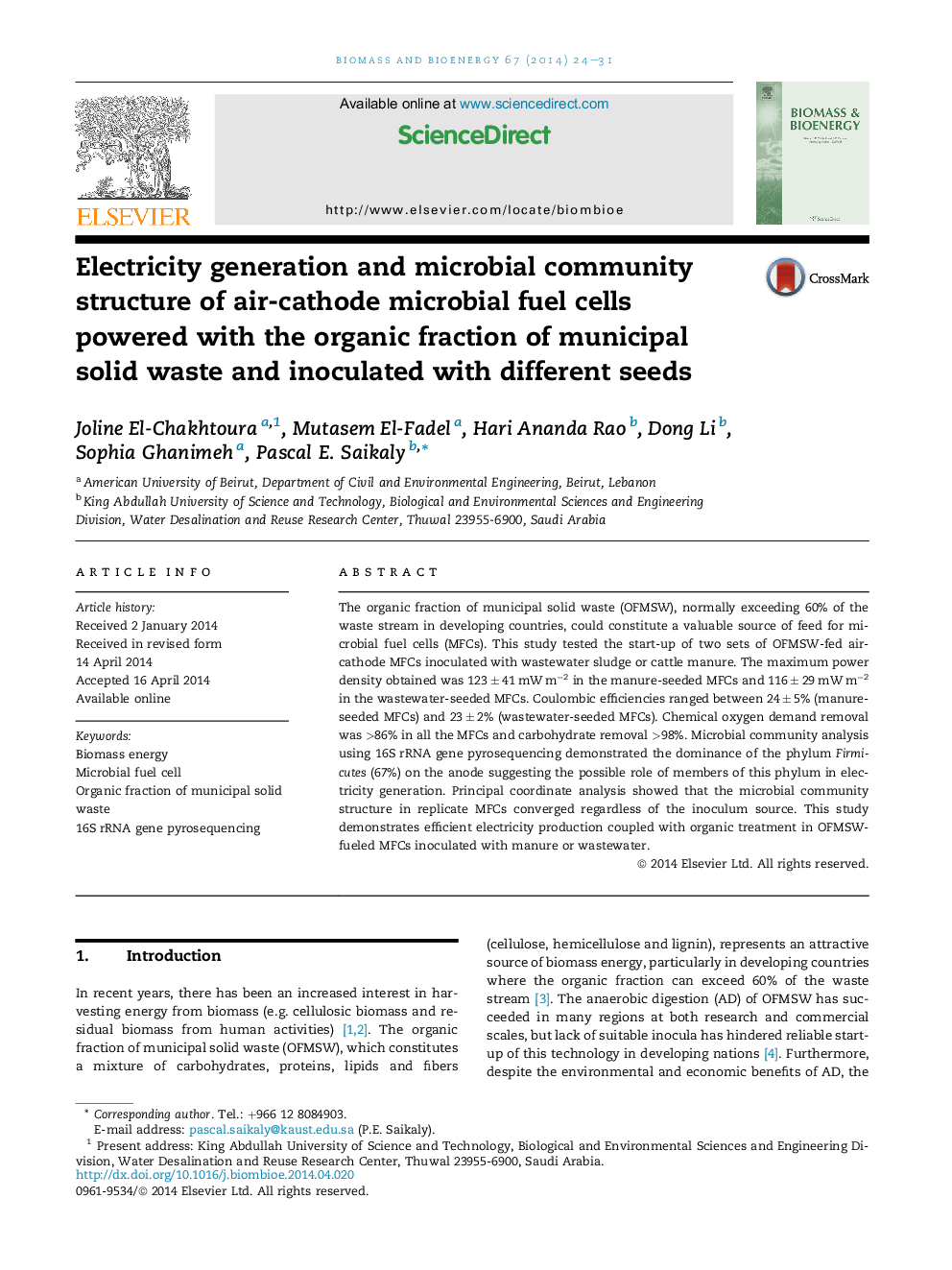| Article ID | Journal | Published Year | Pages | File Type |
|---|---|---|---|---|
| 7064458 | Biomass and Bioenergy | 2014 | 8 Pages |
Abstract
The organic fraction of municipal solid waste (OFMSW), normally exceeding 60% of the waste stream in developing countries, could constitute a valuable source of feed for microbial fuel cells (MFCs). This study tested the start-up of two sets of OFMSW-fed air-cathode MFCs inoculated with wastewater sludge or cattle manure. The maximum power density obtained was 123 ± 41 mW mâ2 in the manure-seeded MFCs and 116 ± 29 mW mâ2 in the wastewater-seeded MFCs. Coulombic efficiencies ranged between 24 ± 5% (manure-seeded MFCs) and 23 ± 2% (wastewater-seeded MFCs). Chemical oxygen demand removal was >86% in all the MFCs and carbohydrate removal >98%. Microbial community analysis using 16S rRNA gene pyrosequencing demonstrated the dominance of the phylum Firmicutes (67%) on the anode suggesting the possible role of members of this phylum in electricity generation. Principal coordinate analysis showed that the microbial community structure in replicate MFCs converged regardless of the inoculum source. This study demonstrates efficient electricity production coupled with organic treatment in OFMSW-fueled MFCs inoculated with manure or wastewater.
Keywords
Related Topics
Physical Sciences and Engineering
Chemical Engineering
Process Chemistry and Technology
Authors
Joline El-Chakhtoura, Mutasem El-Fadel, Hari Ananda Rao, Dong Li, Sophia Ghanimeh, Pascal E. Saikaly,
